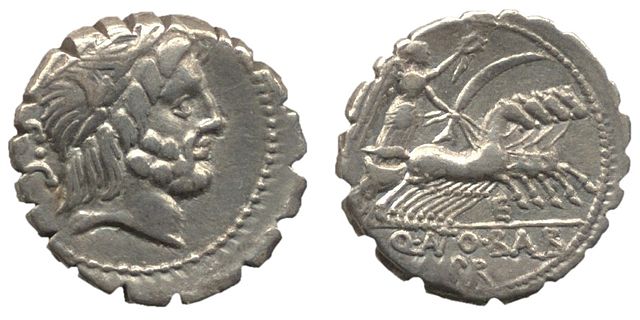The aureus was a gold coin of ancient Rome originally valued at 25 pure silver denarii. The aureus was regularly issued from the 1st century BC to the beginning of the 4th century AD, when it was replaced by the solidus. The aureus was about the same size as the denarius, but heavier.
Aureus minted in 193 by Septimius Severus to celebrate Legio XIV Gemina, the legion that proclaimed him emperor
Aureus of Octavian, c. 30 BC
The denarius was the standard Roman silver coin from its introduction in the Second Punic War c. 211 BC to the reign of Gordian III, when it was gradually replaced by the antoninianus. It continued to be minted in very small quantities, likely for ceremonial purposes, until and through the Tetrarchy (293–313).
Denarius of Octavian and Mark Antony, struck at Ephesus in 41 BC. The coin commemorated the two men's defeat of Brutus and Cassius a year earlier as well as celebrating the new Second Triumvirate.
Top row (left to right): 157 BC Roman Republic, 73 AD Vespasian, 161 AD Marcus Aurelius, 194 AD Septimius Severus; Second row (left to right): 199 AD Caracalla, 200 AD Julia Domna, 219 AD Elagabalus, 236 AD Maximinus Thrax
Flavia Domitilla, wife of Vespasian and mother of Titus and Domitian
Quintus Antonius Balbus (c. 83–82 BC)






